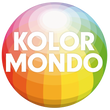🎨

🌿 Natural Colors: A Luxury for the Few
For thousands of years, all dyes came from nature—plants, minerals, and insects. The color palette was limited, and the most vibrant hues were reserved for the wealthy. This exclusivity gave color a clear social and cultural meaning.
🧪 A Purple Chemical Revolution
In 1856, everything changed. Young chemistry student William Henry Perkin tried to synthesize quinine from coal tar—but accidentally created a dark liquid that stained a cloth: mauve was born by chance. Two years later, Princess Victoria wore a mauve dress for her wedding, sparking the world’s first fashion craze for a synthetic color.
🎨 Magenta, Malachite Green & Color Cards
New synthetic colors like magenta, Bismarck brown, and Hofmann’s violet soon followed. By the late 1800s, fashion houses began using color cards and seasonal ribbon samples.
When World War I disrupted the supply of German dyes, the U.S. founded the Textile Color Card Association—the predecessor of today’s Color Association of the United States.
💻 From Catwalk to Computer: The iMac Effect
In 1998, Apple launched its iconic iMac G3 in 11 vibrant, translucent shades. It marked a turning point in industrial design—color became a key selling point, not just an aesthetic detail.
🔢 Color by Numbers: The Pantone Matching System
In 1956, biologist and chemist Lawrence Herbert took over a small printing company and revolutionized color reproduction with the Pantone Matching System, launched in 1963.
Every color received a reference number and was compiled into color books—making it possible to communicate exact color specifications globally and across industries.
🌍 Pantone’s Global Dominance
Today, over 10 million designers and producers use Pantone worldwide.
But – and there is always a but: Pantone’s proprietary system is expensive and restricts access to those who can afford their tools. The colors don’t always translate across different screens and digital platforms, leading to inconsistency. Example: Designers often complain that Pantone shades in print vs. web can look wildly different without a reliable way to calibrate. Also, the Pantone Matching System is not comprehensive and doesn’t represent the full range of perceptible colors. Example: Systems like CIELAB or Munsell offer more scientific precision for color research and analysis.
From a Kolormondo perspective, it shall also be said, that Pantone is difficult to understand. How does one Pantone color relate to another one in Pantone? A Pantone fan deck is very far from intuitive, particularly if you compare it with the Kolormondo globe. As far as we know, Pantone is not a SYSTEM, but simply a bunch of colors, selected by somebody in the Pantone company. It always makes us smile when Pantone “presents a new color”…… Pantone certainly did not invent it, nor did they discover it. It was of course already there, only they did not incorporated it in their system yet….
📌 Tags:
#ColorHistory #Pantone #DesignInspiration #ColorIndustry #JosefAlbers #LawrenceHerbert #iMac #FashionHistory #ColorPsychology #Kolormondo #KolorCulture #ColorStandards #PantoneLovers #ProductDesign
